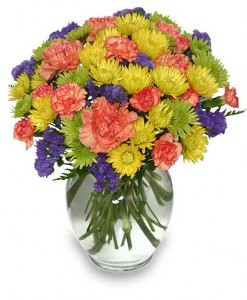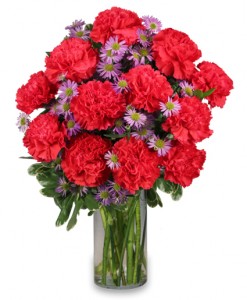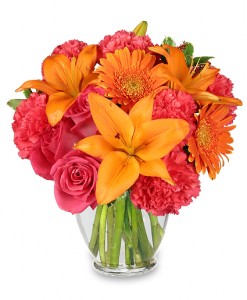This month we spotlight the carnation!
Carnation Origins
The carnation is a beautiful flower most likely native to the Mediterranean region. I say “most likely” because it has been so widely cultivated over the last 2,000 years that no one knows for sure the full range of this flower’s natural origins. Still, if you were to try growing your own carnations, you’d need well drained, neutral to slightly alkaline soil and full sun. Certainly in keeping with a Mediterranean climate!
Carnation Colors and Meanings
In general, carnations represent love, fascination and distinction however color variations can have their own meanings.
- Light Red – Admiration
- Dark Red – Deep love or affection
- Pink – A mother’s undying love – The legend around this color says that the pink carnation was formed when the Virgin Mary wept for Jesus as he carried the cross to his own crucifixion.
- Purple – Capriciousness, unpredictability, fickleness and unreliability
- Yellow – Disappointment, dejection and rejection
- White – Pure love and good luck
- Green – Not a natural color, they are often dyed and coupled with white carnations for St. Patrick’s Day.
- Striped – Regret or refusal
As you can see, the carnation covers a wide range of feelings and events. Did someone ask you out but you want to let them down easy? Say, “No” with flowers! Want to tell the world you’re feeling a bit unpredictable? A purple carnation on your lapel will do the trick nicely. Are you wanting a different flower to use on Valentine’s Day? The red carnation says love as loudly as any rose. The carnation is also the official flower for January birthdays!
Need to think of new and creative ways to use carnations? Contact your local florist and let them guide you! Carnations have been popular flowers for over 2,000 years. They have a storied history and are just downright gorgeous. Next time you have flower needs, don’t forget the carnation!


 Find Your
Find Your 


Speak Your Mind